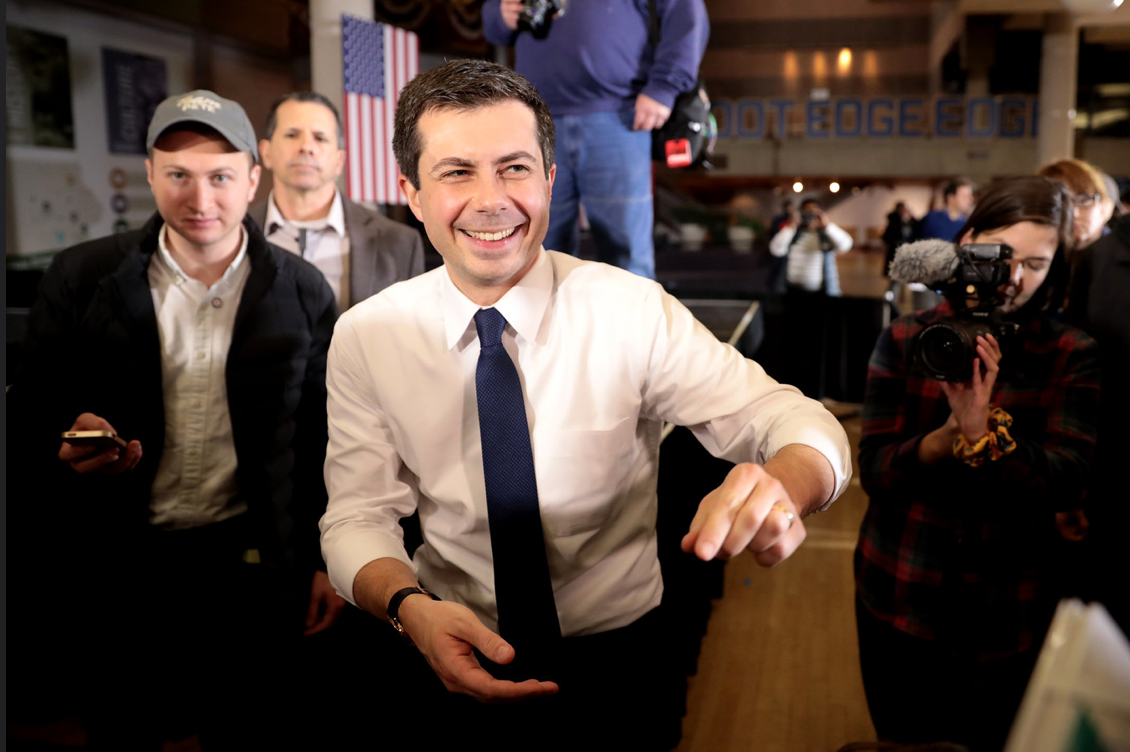The first recipients of a newly expanded major transportation grant program will receive significant money for biking, walking and transit — and even some road projects that federal transportation leaders say will help non-drivers, too.
On Thursday, the U.S. Department of Transportation released the list of projects that were approved as part of the Rebuilding American Infrastructure with Sustainability and Equity grant programs, which funds roughly $2.2 billion across 166 initiatives spanning all 50 states, the District of Columbia, and Puerto Rico.
Formerly known as BUILD (and TIGER before that), the RAISE funding more than doubled when the Bipartisan Infrastructure Law was signed last year, and is one of the largest pots of discretionary funds available for Secretary Pete Buttigieg and his colleagues to influence the transportation future of American communities.
"These projects will improve our supply chains to lower the cost of goods, connect communities that are currently divided, reduce the pollution and the carbon emissions that come from our transportation systems, create jobs and foster economic opportunity, and improve safety on our roads and rails," said Buttigieg. "Learning about these projects and providing the funding to help make for them realities is one of the best parts of serving in this role."
As during the last RAISE grant cycle, sustainable transportation advocates praised the list for living up to the program's name and prioritizing sustainability and equity — and not just for drivers.
“The FY22 RAISE grants underscore the urgency that all communities — rural, suburban and urban — are feeling to provide safe and connected active transportation infrastructure that gets people where they need to go whether or not they have a car,” said Kevin Mills, vice president of policy for the Rails-to-Trails Conservancy. “U.S. DOT has demonstrated its understanding that trails, walking and biking are fundamental to transformative and equitable community design that improves our quality of life."
And when it came to projects that would add more asphalt for drivers, the DOT repeatedly emphasized the benefits to other groups, too. Once again, active transportation infrastructure was included in the majority of these competitive grant projects — officials estimated that about 70 percent — and the DOT even claimed that several lane-widening projects would benefit transit. The overhaul of 22nd Street in Tucson, for instance, would remove weight restrictions on a crucial bridge and enable buses to travel over it, shortening some bus riders' trips by up to 30 minutes.
"Historically, RAISE has seen a significant number of projects that were [focused on] roadways," said Christopher Coes, assistant secretary for transportation policy. "But as part of the bipartisan infrastructure law and through the work of our Federal Highway Administration, we've been encouraging project sponsors to think more holistically. This round, we saw an allocation [where] about 52 percent of our funding [is] going to roadways, but a very significant number of those projects included Complete Streets elements."
Big News for NYC:
— Chuck Schumer (@SenSchumer) August 10, 2022
We secured $7.25 million in funding from @USDOT to expand New York City's majestic greenway system!
I love riding my bike down the waterfront, and I am excited to bring greenways to communities that deserve them all across NYC. https://t.co/K5RHG12Czf
DOT may face criticism from some sustainable transportation advocates for following the Trump administration's precedent of splitting the funds evenly between urban and rural areas, despite the fact that 83 percent of Americans live in cities.
Few of those rural projects, though, are standard-issue highway widenings. Most of the grants will fund Complete Streets projects or transit connectivity in rural regions, many are going to indigenous communities, which received roughly twice the funding they did in previous grant cycles. The tiny town of Berlin, N.H. (pop. 10,000), interestingly, will use its $19-million grant to install a snow-melt system beneath its downtown sidewalks and roads, making it just the second city in America to do so. (Holland, Mich. was the first.)
"In the rural communities, often you see how a dollar figure might not seem significant by the standards and one of our largest cities could be absolutely transformative," said Buttigieg.
No matter the community's size, federal officials hope the new funding will help make amends for the transportation sector's past mistakes.
"[These projects are] going to address safety, including bicycle and pedestrian access, as well as to reduce emissions to tackle climate change," said Mitch Landrieu, White House infrastructure czar. "And they're going to connect Americans more than ever before, helping families no matter where they are from or where they’re headed — getting their children to school, or to visit grandma’s house."
Here are a few of the notable projects:
- A $25-million planning grant to help complete a key segment on California's high speed rail line
- A new shared use path on a retired elevated train line in Chicago. ($20M)
- Infrastructure to stop drivers, bicyclists and pedestrian crashes along Florida's Brightline rail line ($25M)
- Funding for major bicycle/pedestrian bridges over highways, rivers and other barriers that restrict the mobility of undeserved communities, including Phoenix ($25M), Arlington, Va. ($20M), Huntsville, Ala. ($20M), Alamosa, Colo. ($5M), and Sheboygan, Wisc. ($5M)
- Critical trail and greenway extensions, new separated paths or planning in Northeast Texas ($25M), Washington, D.C. ($10M), Albuquerque, ($11M), New York City ($7.2M), and Winston-Salem ($6M)
- Networks of multimodal trails in small towns like Conway, Arkansas ($25M), Plainville and New Britain, Conn. ($16M), and Tulsa ($16M)
- Money for Complete Streets in Philadelphia ($25M), Detroit ($25M), Las Vegas ($24M), San Francisco ($23M), Houston ($21M), Cincinnati ($20M), Natchitoches, La. ($17M), Wheeling, W.V. ($16M), Buffalo ($25M), Pittsburgh ($11M), Boise ($5M), and many more
- Major transit facility upgrades or brand new centers in Atlanta ($25M), Lincoln ($23M), Clearwater, Fla. ($20M), the Chicago suburb of Harvey ($20M), Baton Rouge ($20M), and Prince George County, Md. ($20M)






